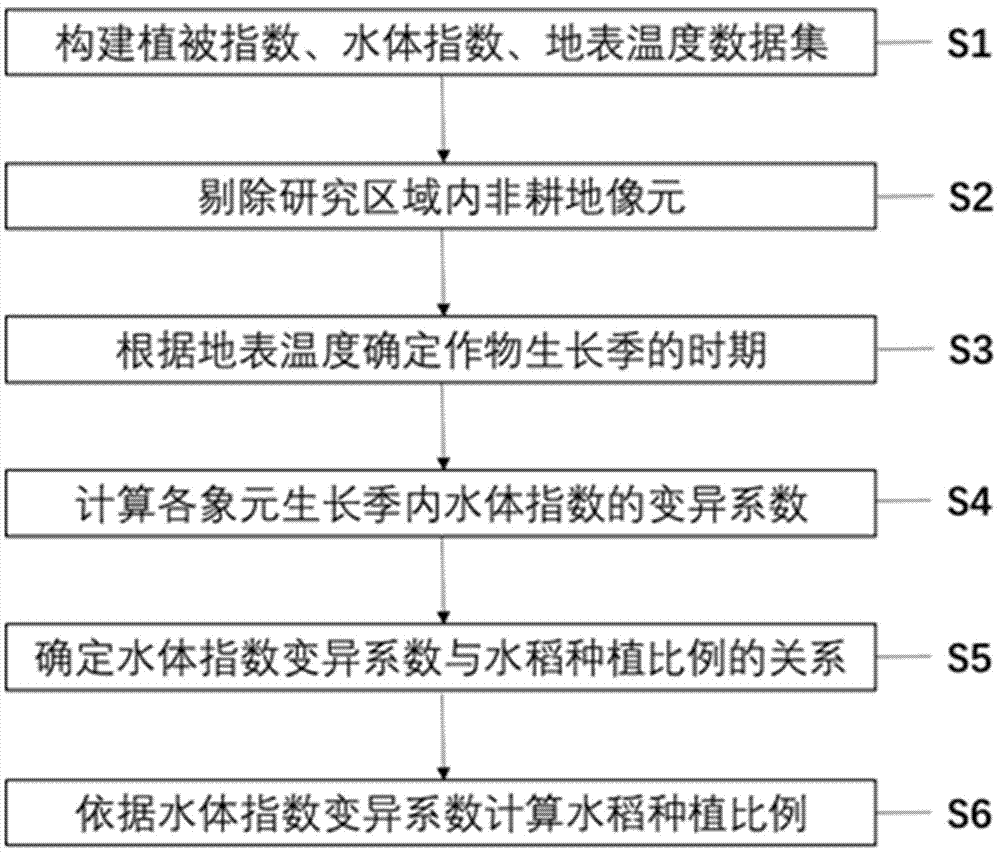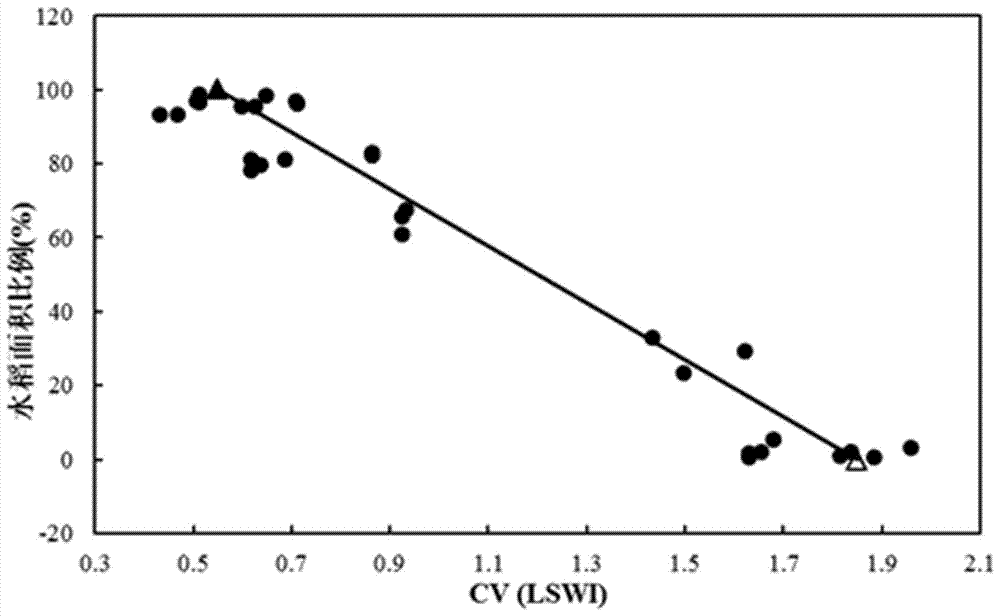Water body index variable coefficient-based rice sub-pixel recognition method
A technology of water body index and coefficient of variation, which is applied in the field of agricultural remote sensing, can solve the problems of low recognition and do not consider the sub-pixel problem of rice, and achieve the effects of high classification accuracy, stable and reliable results, and easy operation.
- Summary
- Abstract
- Description
- Claims
- Application Information
AI Technical Summary
Problems solved by technology
Method used
Image
Examples
Embodiment 1
[0037] A method for automatic identification of rice sub-pixels based on the coefficient of variation of water body index, specifically comprising the following steps:
[0038] Step S1: Construct vegetation index, water body index, surface temperature time series data set;
[0039] Firstly, NDVI (bands 1 and 2) and LSWI (bands 2 and 6) are calculated based on the reflectance products synthesized by MOD09A1 for 8 days. Using Savitzky-Golay filter and other denoising methods to smooth and denoise the original intra-year time series data set. Calculate nighttime surface temperature based on MYD11A2 product. A total of 46 time-series data sets within a year were obtained as the basis for rice sub-pixel identification.
[0040] Step S2: Eliminate non-cultivated land pixels in the research area;
[0041] According to the distribution characteristics of the vegetation index value range, the sparse vegetation (including water body, building land, saline-alkali land, etc.) and natur...
PUM
 Login to View More
Login to View More Abstract
Description
Claims
Application Information
 Login to View More
Login to View More - R&D
- Intellectual Property
- Life Sciences
- Materials
- Tech Scout
- Unparalleled Data Quality
- Higher Quality Content
- 60% Fewer Hallucinations
Browse by: Latest US Patents, China's latest patents, Technical Efficacy Thesaurus, Application Domain, Technology Topic, Popular Technical Reports.
© 2025 PatSnap. All rights reserved.Legal|Privacy policy|Modern Slavery Act Transparency Statement|Sitemap|About US| Contact US: help@patsnap.com



